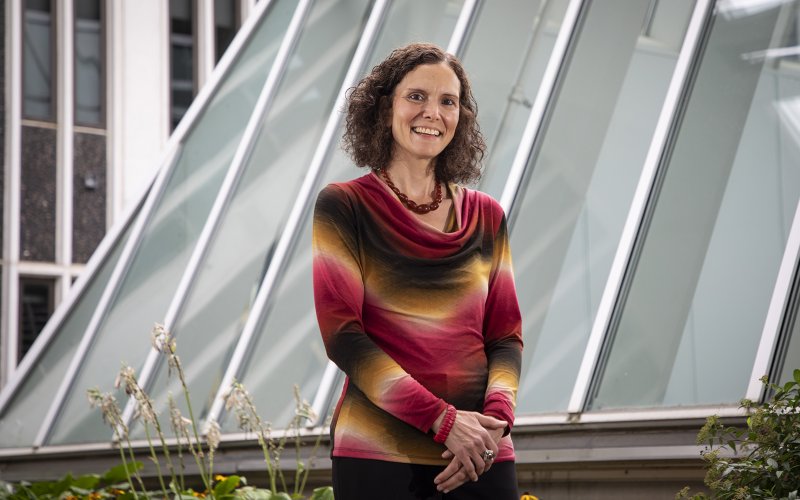A Sociologist Uncovers the Impact of Family Structure on Racial and Ethnic Residential Segregation

ALBANY, N.Y. (Sept. 9, 2021) — A main takeaway from previous studies of racial and ethnic residential segregation in metropolitan America is that the segregation of Blacks from whites remains exceptionally higher than the segregation of other non-white groups, although in recent years there have been declines in such segregation.
But family types differ among racial and ethnic groups, said Samantha Friedman, associate professor in Sociology. And with evictions disproportionately affecting Black mother-only families, she believes racial and ethnic segregation researchers should pay more attention to family structure and the presence of children. Leading a study conducted with two colleagues, Friedman has gone deeper into the numbers and found some surprising results.
“Our study sought to advance the literature by examining the residential segregation of Black, Hispanic and Asian married-couple and single-mother families from whites by the presence of children under 18 years of age,” said Friedman.
The study, “Racial and Ethnic Residential Segregation by Family Structure and the Presence of Children in Metropolitan America” was supported by research assistance via UAlbany’s Center for Social and Demographic Analysis (CSDA) and published in the July 1 issue of Race and Social Problems.
Friedman’s team looked at how the segregation of Blacks, Hispanics, and Asians from whites varies between married-couple and single-mother families; families with and without children under 18 years of age, and, combining those two factors, the presence or non-presence of related children under 18 in married-couple versus single-mother families.
Their analysis revealed that the residential segregation of Blacks, by family structure, to be distinctive from the other racial and ethnic groups. Working with Assistant Professor Colleen Wynn, PhD ’18, of the University of Indianapolis and Hui-shien Tsao, research scientist with the NYS Office of Children and Family Services, Friedman found, after controlling for group-specific poverty rates and “metropolitan characteristics,” that:
- Among Blacks, single-mother families are significantly more segregated from whites than are Black married couples, regardless of the presence of children.
- These same differences in segregation are not found among Hispanics and Asians.
- Among Hispanics and Asians, married families with children under 18 are actually more segregated from whites than are married families without children under 18 — “suggesting that married Hispanics and Asians with children desire closer proximity to their co-ethnics,” even though they can afford predominantly white neighborhoods.
- Among Hispanics and Asians, single-mother families without related children under 18 — those which would including having adult children and/or parents in the household — are more segregated from whites than married families with related children under 18.
Friedman and her collaborators relied on data from the 2010 Decennial U.S Census to calculate the residential segregation scores for metropolitan areas — places with at least 50,000 people. In addition, they used data from the 2006-2010 American Community Survey to calculate group-specific poverty rates and account for other metropolitan-based characteristics.
“The results suggest that racial and ethnic segregation by family structure and the presence of children varies by the racial and ethnic group considered and is, therefore, important to understanding overall racial and ethnic segregation in metropolitan America,” said Friedman.
While previous studies have indicated “Black exceptionalism” in terms of residential segregation, the Friedman-led research indicates that “for Black single-mother families, this exceptionalism is more profound.”
Given that, for Blacks in America, segregation from whites negatively impacts their level of healthcare and education, and raises their risk of mortality via homicide victimization, she wrote, “our study shows that more attention needs to be paid to their residential segregation from white families, which is worse than that experienced by Black married-couple families and their children.”
Once the 2020 U.S. Census data are fully available, Friedman, Wynn and Tsao plan to use them to examine whether the distinctive segregation patterns of Black single-mother families from whites have worsened over time.
The residential segregation study was one of two articles recently published with Friedman as lead author. In “COVID-19 Mortality in New York City Across Neighborhoods by Race, Ethnicity and Nativity Status,” published in Geographical Review on July 27, she examined with CSDA researcher Jin-Wook Lee the ramifications of residential segregation and persistent spatial inequalities faced by neighborhoods of color.




